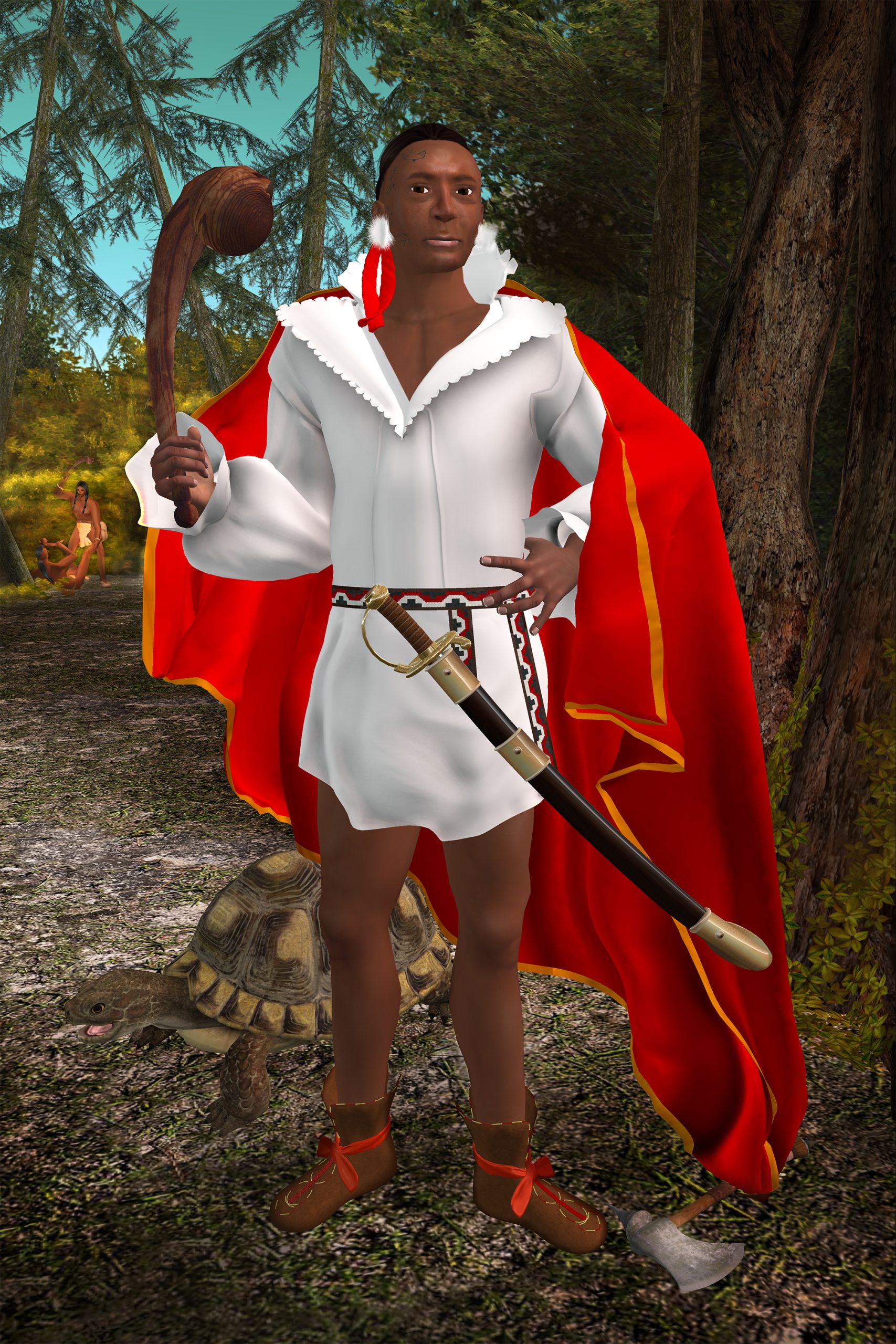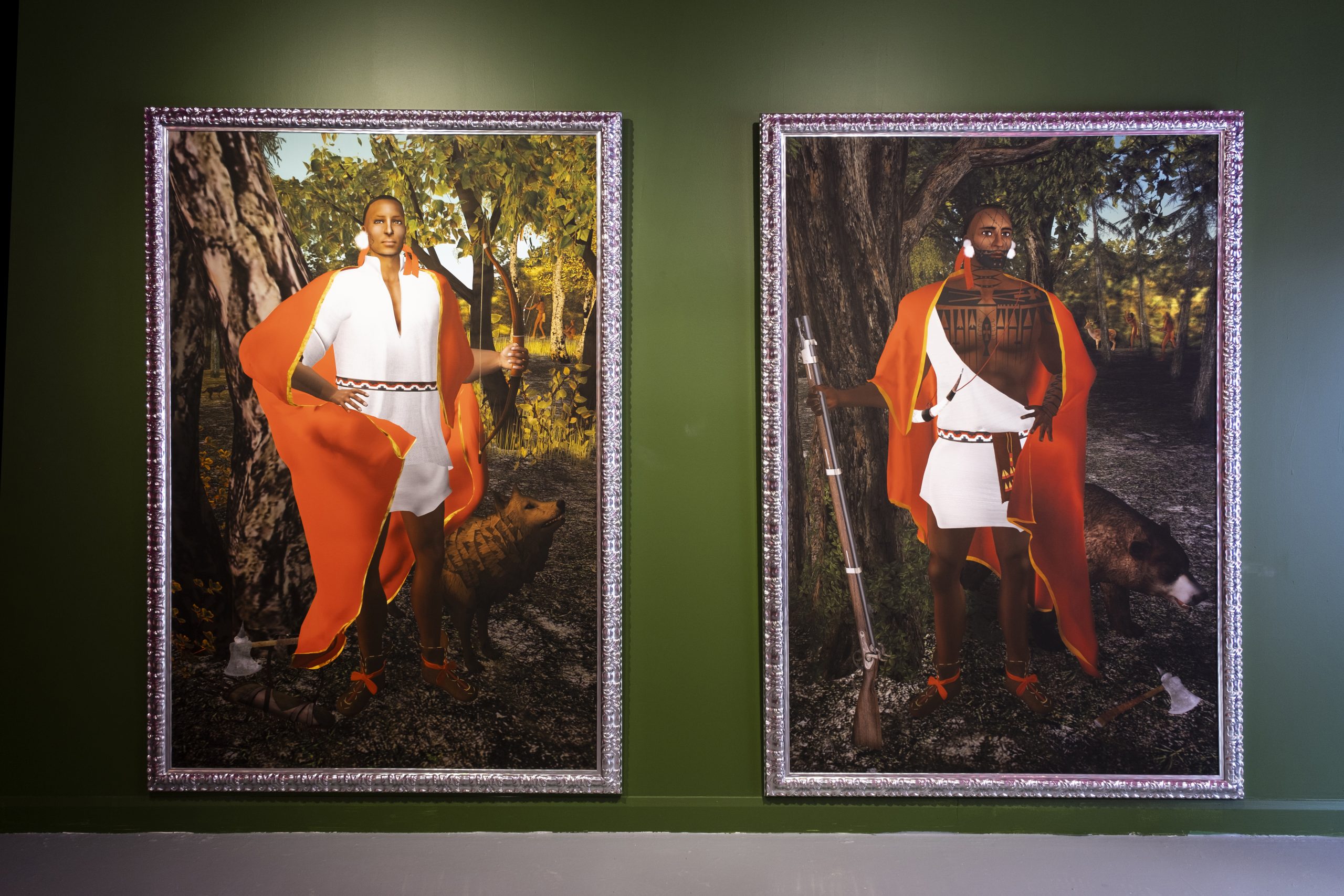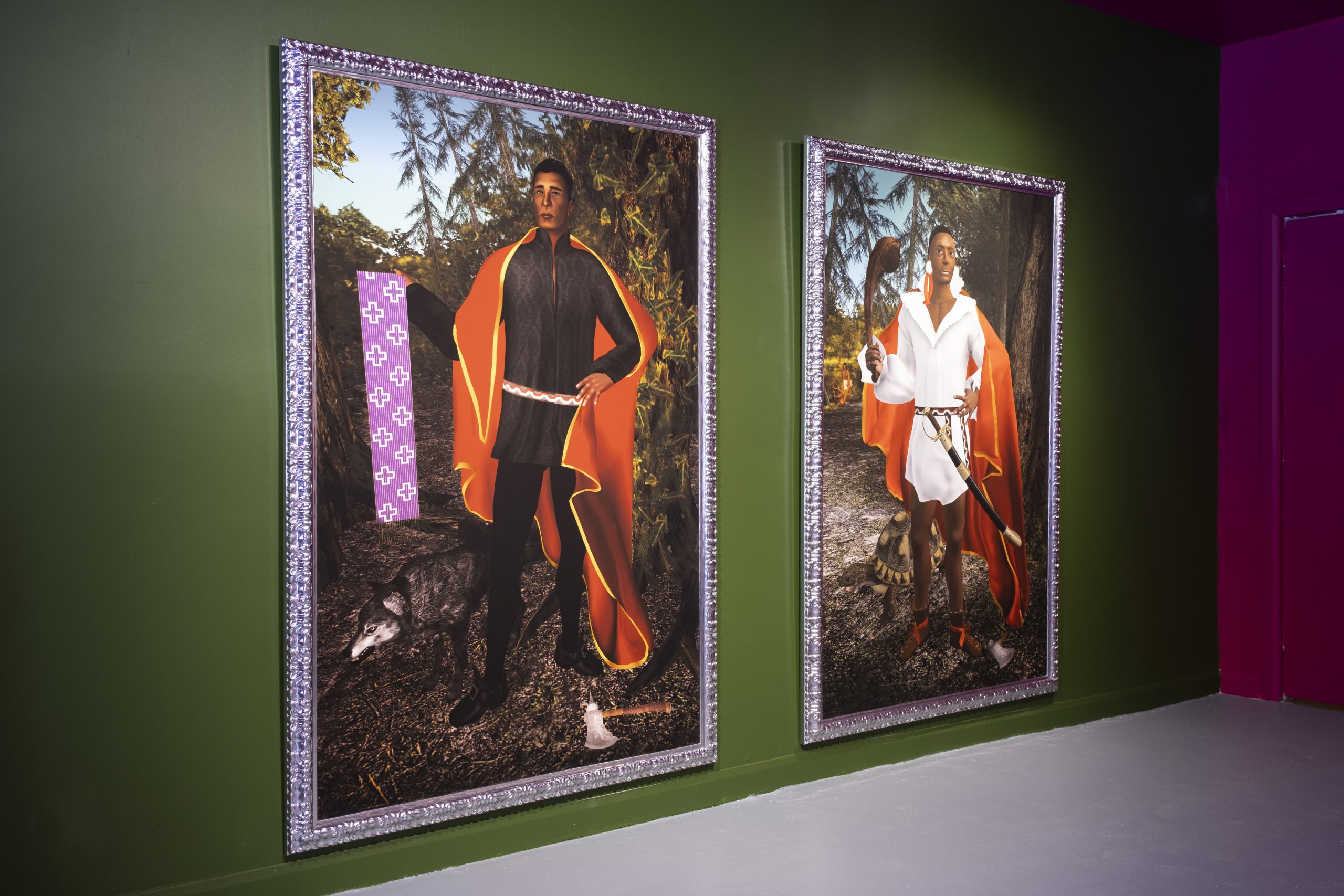THE FOUR KINGS, REVISITED
The Four Kings, Revisited, is a series of four framed machinimagraphs based on portraits of the so-called Four Indian Kings painted by Jan Verelst. Commissioned in 1710 by Queen Anne to commemorate her meeting that year with a delegation of four Iroquois men, they are considered the earliest surviving oil portraits from life of Indigenous North Americans.
My versions are life-sized, unlike the disappointing format of the originals. I selected ornate frames to reference those of the paintings, but in silver rather than gold, because it’s the more futuristic colour.
My research into these specific portraits, and royal portraiture in general, has led me to believe that Verelst was very invested in getting the details right. The men’s tattoos as well as their moccasins, sashes, and the wampum belt were almost certainly painted from life. Clearly, the clan animals were not.
In my practice, I ask what concepts, memories and things from the past can we discard, and what do we want to bring with us into the future? These portraits represent a moment when a diplomatic relationship with the Haudenosaunee was of great importance to the Crown, so important that printed versions of the paintings were sent to North America for mass distribution. They also remind us of the adventurous spirit of our ancestors, who were unafraid to travel across the great water, visit a strange culture, and meet their leader. And they brought their culture and values with them. A Mohawk in England is still a Mohawk.





